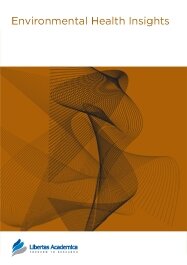

Publication Date: 30 Oct 2008
Journal: Environmental Health Insights

Cancer Prevention Research Centre, University of Queensland, Brisbane, Australia.
Abstract
A growing number of studies focus on the role of environments in promoting active lifestyles.1 Being physically active in daily life, which is known to have significant health benefits,2 is easier to do in some environments than it is in others. Despite mounting evidence on the relationships between environmental characteristics, activity patterns, and health,3 most decisions on environmental planning and design appear to be made without considering their implications for residents’ activity and their health. In order to promote physically-active lifestyles through environmental design, it is desirable that environmental decision-making processes explicitly incorporate people’s activity patterns as a key criterion. However, those who are involved in environmental planning and design are not necessarily aware that their decisions could ultimately affect people’s health by influencing their behaviors. Although the importance of collaboration between planning, transportation and public health has been advocated for many years,1 there remains significant work to be done to realize such cooperation. This commentary discusses the possibility of making use of existing planning and design initiatives to promote active lifestyles. More specifically, I argue that environmental planning principles aiming for sustainability in urban or suburban areas, such as compact city and smart growth, could not only make environments conducive to physical activity, but also help reduce time in sedentary behavior— newly identified and significant health risk. Human health and environmental sustainability are both top-priority issues in today’s society. The planning and design of environments that can improve human and environmental health simultaneously are more likely to receive strong support from a wide range of stakeholders, thus have a better chance of being implemented.
PDF (165.41 KB PDF FORMAT)
RIS citation (ENDNOTE, REFERENCE MANAGER, PROCITE, REFWORKS)
BibTex citation (BIBDESK, LATEX)
XML
PMC HTML
My experience in publishing our manuscript in Environmental Health Insights was positive. The speed of processing was the fastest of all the journals I have encountered. The peer review and editorial comments were to-the-point and professional. The open reader access greatly enhances article visibility. I would publish again in this journal if I have suitable studies to publish.

All authors are surveyed after their articles are published. Authors are asked to rate their experience in a variety of areas, and their responses help us to monitor our performance. Presented here are their responses in some key areas. No 'poor' or 'very poor' responses were received; these are represented in the 'other' category.See Our Results
Copyright © 2013 Libertas Academica Ltd (except open access articles and accompanying metadata and supplementary files.)
FacebookGoogle+Twitter
PinterestTumblrYouTube